Spinal osteochondrosis -This is a chronic distribution disease in which the intervertebral of the cartilage disc and the vertebrae is deformed.Recently, more and more often you have to listen to this disease.And it is not surprising, because if the previous osteochondrosis will be considered a pathology of the elderly, it has now been very "younger."We live in an era of scientific and technological progress, we have mechanical elevators and stairs, transport and media that allow it to quickly transmit information, applying a minimum of physical effort to this.As a result, for speed and comfort, we pay the health of our spine.But do not despair, osteochondrosis is not a prayer.Let's find out what changes occur in the spine with osteochondrosis, how modern methods are manifested and analyzed to treat this condition.
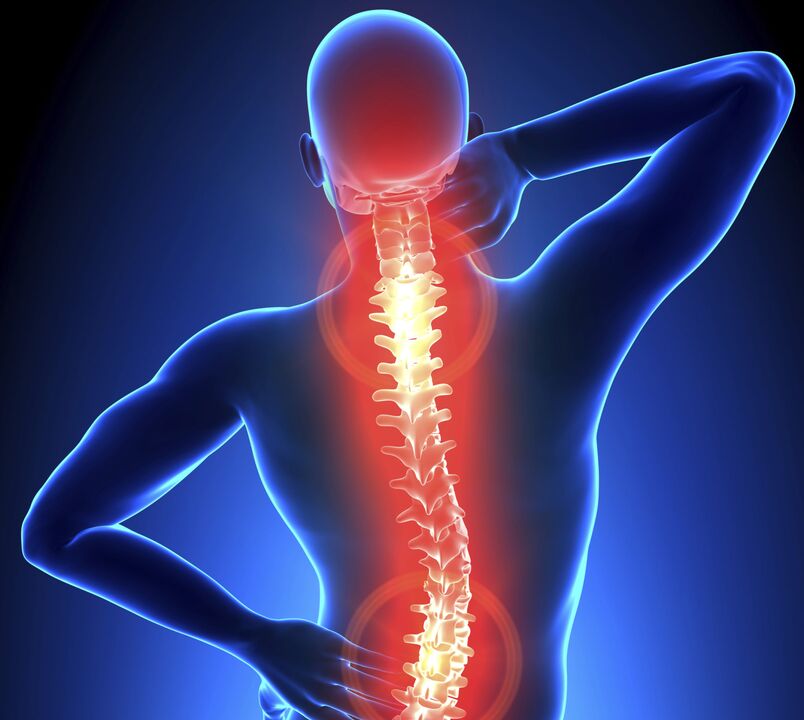
Osteochondrosis of the column: causes
The column consists of vertebrae, which are interconnected by cartilaginous intervertebral discs.They serve as a shock absorber and provide elasticity and mobility of the spine.
Our body grows up to 20-25 years.At this time, the intervertebral disc is equipped with blood vessels, with which active nutrition occurs.After stopping growth, the blood supply stops.Next, the disc receives energy from adjacent tissues, mainly from the muscles.The discs eat like a sponge, when they are compressed, they give metabolic products and with stretch they absorb nutrients.If for some reason the intervertebral album does not receive enough energy, it begins to collapse.
Consider the causes of column osteochondrosis:
- A sedentary lifestyle.We already know that the cartilage album feeds when compressing and stretching, and for this the column must move.
- Possessed.This applies to office workers and drivers, because a prolonged session inclined forward leads to an unequal load in the spine.Imagine that the entire mass of the upper body is not a pressure throughout the disc, but at certain points.The power of cartilage tissue at these points is disturbed, which leads to its destruction.
I feel long-term on the computer when it leans forward increases the load in the spine by 50-70%.
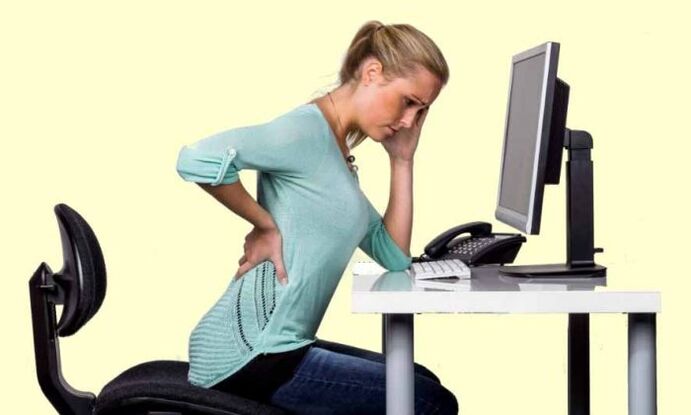
- Excessive physical activity.In addition to the load in the spine, muscle tension occurs, as a result of which blood circulation of the muscles and the intervertebral disc is altered does not receive the necessary nutrition.
- Incorrect posture.A persistent change in spinal configuration overloads intervertebral discs.
- Obesity.The excess mass of the upper body has a load in the spine.
- Age -related changes.This is a natural process, as a result of which the metabolic processes of the cartilage and bone tissue slowly.
Changes in the column with osteochondrosis
The osteochondrosis of the column is characterized by a violation of the nutrition (trophism) of the intervertebral discs.First, the shape of the album changes: it stands out towards the spinal channel.If the stab of the intervertebral album occurs without a rupture of the fibrous Chinese ring, then this condition is calledoutgoing.This is one of the stages of the spine osteochondrosis.The next step is the rupture of the fibrous-chryshot ring, which is accompanied by a displacement of the EADED nucleus of the intervertebral disc.So formedIntervertebral hernia.
The bone tissue of the vertebrae is also involved in the process.It grows and forms the osteophytes or bone peaks called.They compensate the load in the column, while limiting the movement.
Often, osteophytes are called "salts deposition."In fact, there are no salts.These are bone formations to eliminate with the help of massages and manual techniques, of course, they will not work.
Osteochondrosis muscles are also subject to certain changes.To maintain the informed spine in a normal position, they are in a constant voltage state.Muscle cramps for osteochondrosis are accompanied by pain and make the trophic structures of the column even more.
A change in the shape of the structures of the column leads to a displacement of the vertebrae and intervertebral discs.In this case, compression (compression) of the root nerves occurs.They become inflamed and cause severe pain.
Osteochondrosis of the spine with root syndrome is manifested by pain in the legs, arms, chest and internal organs (the heart, lungs, stomach, intestines, kidneys, etc. The number of weapons, legs, face and tongue for osteochondrosis are also a sign of the compression of the radical nerves.
Column osteochondrosis symptoms
Whatever the spine involved in the pathological process, the disease is manifested by two main symptoms: pain and limitation of the movement of the spine and the extremities.
Symptoms of osteochondrosis of the cervical column
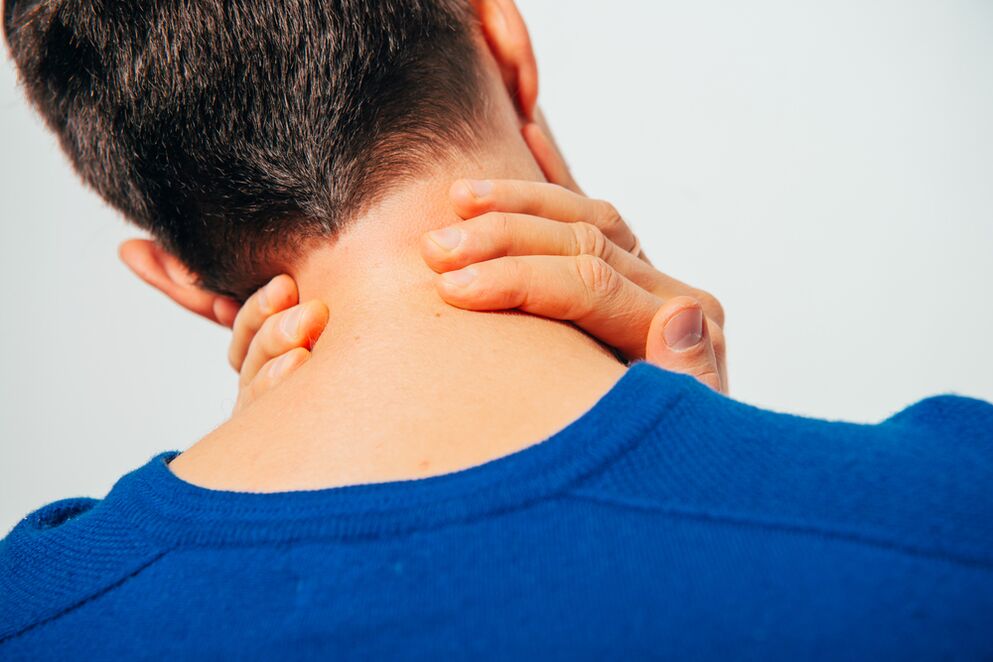
Cervical vertebrae are the smallest and mobile.In addition, the blood vessels that feed the brain pass them through them.That is why the cervical column is considered the most vulnerable.The osteochondrosis of the cervical region is manifested by characteristic symptoms:
- The neck pain that can be given on the back of the head, shoulders, spatula.The pain intensifies by bowing the head;
- Headache, dizziness, noise and sound in the ears.In the context of the disease, hearing impairment is possible;
Headaches for osteochondrosis are a fairly common occurrence.People who suffer from systematic headaches must necessarily be examined by a neuropathologist.According to statistics, in 30% of cases, the cause of headache is cervical osteochondrosis.
- Pain in the hands and chest.Restriction of movements of the hand;
- Violation of the coordination of movements;
- In some cases, vision and speech suffers;
- Increased blood pressure.
The vertebral artery syndrome with cervical osteochondrosis is a complex of symptoms to which it must be attentive.The vertebral artery nourishes the brain, and when compressed, its blood circulation is altered.The vertebral artery syndrome with cervical osteochondrosis has the following signs:If you have these symptoms, you need to contact a neurologist.Vertebral artery syndrome is the most common cause of stroke at an early age.
- Noise in the ears;
- Headache, dizziness;
- Tachycardia (rapid beat);
- Visual violation, the appearance of "flies" in the eyes;
- Loss of consciousness.
Symptoms of Osteochondrosis of the thoracic column
The thoracic column is less mobile than cervical or lumbar.In this sense, it is more difficult to cure it.In the thoracic cavity there are vital organs: the heart, the large blood vessels and the lungs, so the symptoms of the osteochondrosis of the thoracic region can be confused with the diseases of the thoracic cavity.
Signs of osteochondrosis of the thoracic column:
- The pain of pain between the shoulder blades and in the chest area.The pain intensifies after a long stay in a forced position or during physical effort;
- Pain and rigidity of movements during breathing;
- Pain between ribs (intercostal neuralgia);
- Skin numbness, the feeling of "chicken skin";
- Pain can give in the heart, lungs, stomach and kidneys;
- Restriction of movement during inclinations, raising the hands and turns of the body.
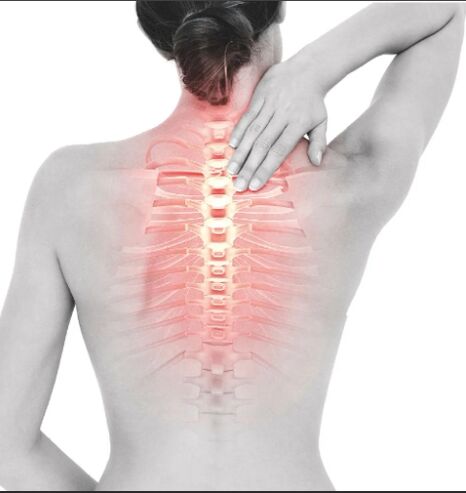
How to distinguish osteochondrosis from the heart pain column?
The pain by the osteochondrosis of the thoracic column can be so intense that it can easily suspect heart disease.Let's take a look at how osteochondrosis differs from pain in the heart with angina pectoris:
- The duration of pain.With the osteochondrosis of the spine, the pain can last days and weeks, and with angina pectoris, up to 10 minutes.
- Relocation (termination) of pain.With angina pectoris, pain stops by nitroglycerin, and with osteochondrosis, analgesics are effective: diclofenac, meloxicam, etc.
- The changes in the ECG are characteristic of cardiac pathology and normal ECG osteochondrosis.
Symptoms of the lumbar column osteochondrosis
The lumbar column is more susceptible to physical effort.Any of our activity at home somehow involves this part of the spine.Almost all faced pain in the lower back, and this is the most common symptom with which they are looking for a doctor for help.
Signs of lumbar column osteochondrosis:
- Back pain with the back, "shots" during physical effort and with a long -term forced position.The pain in the osteochondrosis of the lumbar region is combined by the termRadiculitis
- Violation of the work of the genitourinary authorities.Pain in the kidney area, difficulty urinating.Women can have a rape of the menstrual cycle, pain in ovaries and the uterus, and men have problems with power.
- Pain in the buttocks, hips, legs and feet.Violation of the sensitivity of the legs, tingling, numbness.
- With prolonged compression of nerve roots and blood vessels, an interspersed limp can be developed.When walking, a person begins to limit, and needs to stop and relax.
Treatment of spine osteochondrosis
Having treated the symptoms of osteochondrosis, a logical question arises: what to do next, how to deal with osteochondrosis?Fortunately, we will cure the osteochondrosis.With a small reservation, with timely treatment and desire to participate in your health.And a lot in our hands.Like any chronic disease, spinal osteochondrosis is for a long time.I don't hope you can get rid of symptoms in a week.
Currently, conservative treatment is actively practicing, which includes a wide range of measures.The main thing that the patient needs to understand is passively treated.With severe pain, they will be prescribed analgesics and anti -inflammatory medications, as well as muscle relaxants.But in some cases, it can dispense with medications.Let's look at the treatment methods used to treat osteochondrosis.
Preparations for the treatment of spine osteochondrosis
- Non -steroidal anti -inflammatory drugs (NSAIDs).These medications will help relieve pain and inflammation.They are used in the form of injections, tablets and local products: gels or ointments.It is necessary to take into account that non -steroid anti -inflammatory medications for the treatment of osteochondrosis cannot be taken in progress, since they can cause gastritis and stomach ulcer.
- Musorelaxantes- A group of drugs that relieve muscle tension, thus reducing the load in the spine and improving their blood circulation.They relieve muscle spasm with spine osteochondrosis.The most effective works in combination with NSAIDs.
- Condroprotectors- Restore and protect the cartilage from destruction.They are elements of the structure of the joint cartilage (derivatives of hyaluronic acid).They are used in the form of tablets, intramuscular and intrafast.Its important less is a fairly long treatment.The optimal course is 6 months.Not all patients can obediently comply with recommendations all this time.
- Vasodilatative drugsFor osteochondrosis, it is used to improve blood circulation.
It is worth noting that any medical medicine only eliminates pain with osteochondrosis, but does not cure the problem.The medications will not put the vertebrae and intervertebral discs instead and will not return the previous anatomical structure.
Non -fragments osteochondrosis treatment methods
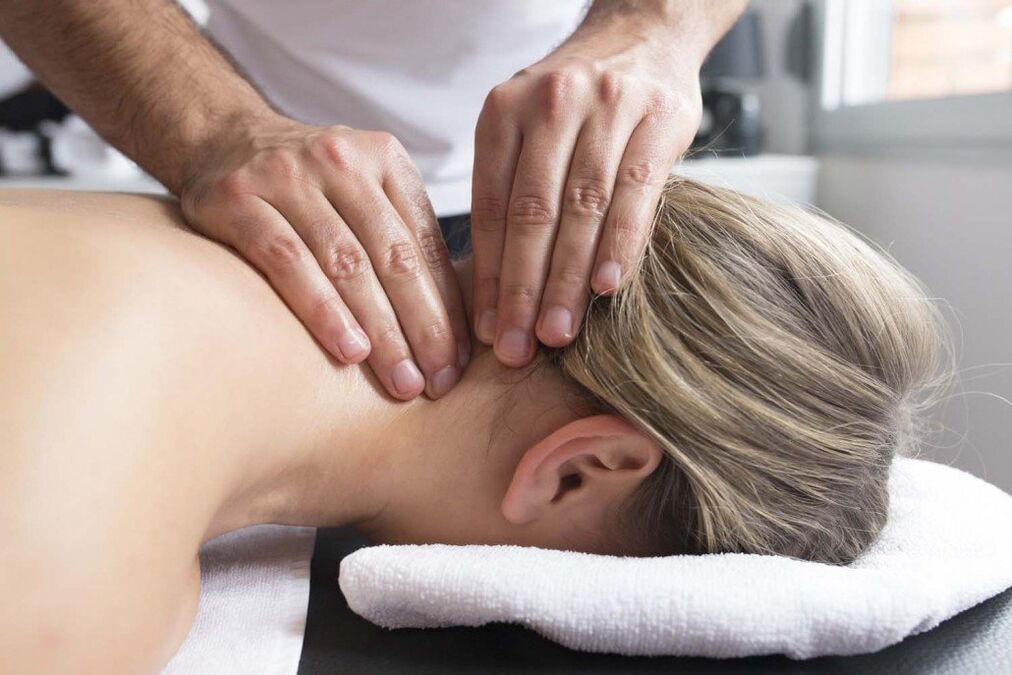
- Massage.The main massage task for the spine osteochondrosis is to relieve muscle spasm and increase blood flow.Therefore, cartilage nutrition improves, edema decreases, pain decreases, the joint movement is restored.The massage, unfortunately, gives a temporary effect.We know that with osteochondrosis there are changes in the spine, so it will not work to restore it completely.In addition, if osteophytes have already been formed, which are confused with "salts of salts."
- Manual therapyPreviously, this method of treatment of osteochondrosis was quite skeptical.However, a large -scale clinical study in 2017 showed the effectiveness of manual therapy.However, manual therapy for osteochondrosis should be taken very carefully.First, you must make a magnetic resonance to determine the exact place of damage.Many manual therapists act intuitively, without certain knowledge and skills.But this is not the case in which it is necessary to play intuition, especially with intervertebral hernias.The manual therapist with an inept approach can damage more than the disease itself, so before making a decision on such procedures, the specialist must be taken responsibly.
- Medical Physical Education (exercise therapy)- Perhaps the most effective method to treat osteochondrosis.Since this disease is usually a consequence of the lack of amount of spine, physical exercises are what you need!The specialist will select a set of exercises and monitor its implementation.To maintain the effect after the training course, it is necessary to continue the exercises.You can choose a sport that is suitable for people with osteochondrosis.An ideal option for the osteochondrosis of the spine is swimming, yoga and pilates.It is good to hang on the horizontal bar several times a week (if there are no contraindications).Stretching exercises help "take out" the column and relax tense muscles.
Not all sports are indicated for osteochondrosis.For example, running can aggravate the disease.Therefore, before making this or that decision, it is advisable to consult a physiotherapy specialist.
And, of course, you should think about changing your lifestyle.Osteochondrosis is a chronic disease, respectively, it is necessary to treat for a long time.The medications or massage will not return the spine with a pristine appearance, and this must be reconciled.And this means that it will be necessary not only to do special exercises, but also adjust some of your habits.
Prevention of the spine osteochondrosis
- First, it is necessary to pay attention to your workplace.If you work, try to bow forward.The chair must be with a hard back and a lumbar curve.
- Follow the posture.Not only is it beautiful, but also good for health.
- Try not to lift weights.If necessary, put a special bandage or a corset for the back.
- If the cause of the osteochondrosis of the column has become excess weight, it will have to get rid of extra pounds.
The health of the column is in our hands!













































